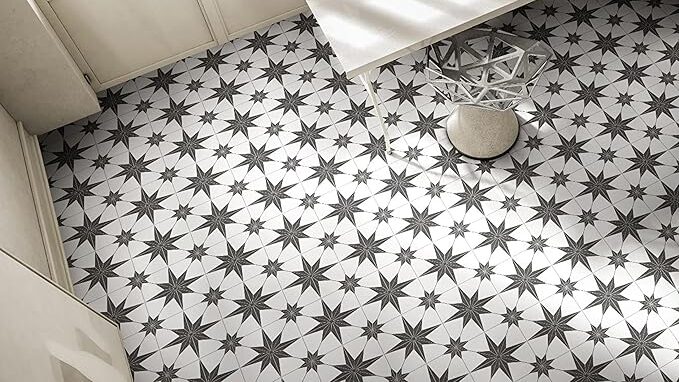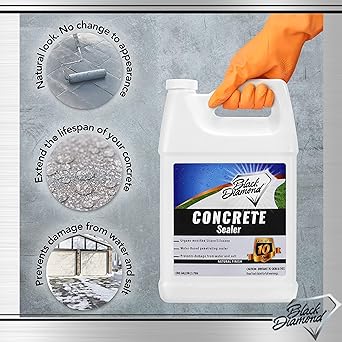Cost Effective Upgrades: Analyzing the Costs of Tiling vs. Concrete Sealing
July 20, 2024 | by Germaine

Introduction
As homeowners, we are constantly looking for ways to improve and upgrade our living spaces. However, with the rising cost of home renovations, it can be challenging to find budget-friendly options that will still give us the desired results. When it comes to room upgrades, two popular choices that often come to mind are tiling and concrete sealing. Both have their own benefits and drawbacks, but the question remains – which one is the more cost-effective option? In this article, we will delve into the costs associated with tiling and concrete sealing, and analyze which one may be the better investment for your home. We will break down the expenses involved in each process, including materials, labor, and maintenance, in order to give you a comprehensive understanding of the true costs of these room upgrades. By the end of this article, you will be equipped with the knowledge to make an informed decision on whether to choose tiling or concrete sealing for your next budget-friendly room upgrade.

Cost-effective room upgrades: tiling vs. concrete sealing
When considering cost-effective room upgrades, the choice between tiling and concrete sealing is crucial. Tiling offers a versatile and aesthetically pleasing option that can enhance the overall look of a space. It provides durability, easy maintenance, and a wide range of design options to suit different preferences. On the other hand, concrete sealing is a more budget-friendly alternative that offers protection against stains, moisture, and wear and tear. While it may lack the decorative appeal of tiling, concrete sealing is a practical choice for areas with high foot traffic or where a more industrial look is desired. Ultimately, the decision between the two options will depend on factors such as budget, design preferences, and the intended use of the space.
Expense breakdown: materials and labor
The expense breakdown for a project typically includes two main categories: materials and labor. Materials encompass all physical items required for the project, such as wood, metal, or tools. The cost of materials can vary significantly based on the quality and quantity needed. On the other hand, labor involves the cost of manpower required to complete the project, including wages, benefits, and any additional labor-related expenses. Labor costs can fluctuate depending on factors like skill level, experience, and project complexity. By breaking down expenses into materials and labor, project managers can effectively allocate resources and track expenditures to ensure the project stays within budget.
Concerning tiling and concrete sealing a certain level of skill will be need; thus labour cost will depend on the the level of skills and experience required to complete the task. Tiling would generally carry a greater labor cost compared to concrete sealing of floors. The reason for this is that tiling involves more intricate and time-consuming work, such as measuring, cutting, laying, and grouting tiles. It also requires a higher level of skill and precision to ensure a clean and professional finish.
On the other hand, concrete sealing is a more straightforward and less labor-intensive process. It typically involves cleaning the concrete surface, applying the sealant, and allowing it to dry. While concrete sealing may still require some skill and expertise, it is generally a quicker and easier task compared to tiling. Overall, the greater labor cost of tiling is due to the additional time, effort, and skill required to complete the job compared to concrete sealing.

Pros and cons of tiling
Now, tiling offers many benefits such as durability, easy maintenance, and a wide range of design options. It is resistant to stains, scratches, and water damage, making it suitable for high-traffic areas like kitchens and bathrooms. Additionally, tiles are available in various colors, patterns, and sizes, allowing for endless customization possibilities. However, tiling can be expensive, especially when considering the cost of materials and professional installation. It can also be cold and hard underfoot, leading to discomfort for some individuals. Despite these drawbacks, the long-term durability and aesthetic appeal of tiling make it a popular choice for many homeowners.

Benefits of concrete sealing
Concrete sealing offers a multitude of benefits for both residential and commercial properties. Firstly, it helps to protect the concrete surface from stains, oil spills, and other contaminants that can cause damage and deterioration over time. This not only prolongs the lifespan of the concrete but also reduces the need for costly repairs and maintenance in the future. Additionally, concrete sealing enhances the appearance of the surface by adding a glossy finish and improving its overall aesthetic appeal. It also helps to prevent water penetration, reducing the risk of cracks, mold, and mildew formation. Overall, concrete sealing is a cost-effective solution that provides long-lasting protection and enhances the durability and appearance of concrete surfaces.
Making the budget-friendly choice
When it comes to making budget-friendly choices, it’s essential to prioritize value and practicality. This means opting for products or services that offer the most benefits at a reasonable cost. Comparison shopping and researching different options can help in finding the best deals and discounts. Seeking out sales, promotions, and using coupons can also lead to significant savings. Additionally, considering generic or store-brand items instead of name brands can result in substantial cost reductions without sacrificing quality. Making a budget-friendly choice also involves being mindful of one’s spending habits and setting financial goals to ensure that resources are allocated wisely. By being proactive and strategic in decision-making, it is possible to maintain a balanced budget while still enjoying the benefits of various products and services.
When it comes to sealing concrete or tiles, making the budget-friendly choice is key. By opting for cost-effective sealants, you can protect your surfaces without breaking the bank. Look for sealants that provide durability and effectiveness at a reasonable price point. Consider water-based sealants as they tend to be more affordable than solvent-based alternatives. Additionally, do your research to find products that offer long-lasting protection, reducing the need for frequent reapplications and saving you money in the long run. With a bit of savvy shopping and a focus on value, you can seal your concrete or tiles without overspending.
When it comes to selecting tiles for your space, opting for the budget-friendly choice is key. By making smart decisions, you can achieve a stylish look without breaking the bank. Consider choosing ceramic or porcelain tiles, as they are durable and cost-effective options for both walls and floors. Additionally, opting for larger tiles can reduce installation costs and create a seamless appearance in your space. It’s also worth exploring different patterns and layouts to add visual interest without increasing expenses. By prioritizing cost-effective options and carefully planning your tile selection, you can create a beautiful and budget-friendly space that meets your needs and style preferences.
Consider Maintaining the Floor
Concrete sealed floor
To maintain a concrete sealed floor, it is important to regularly clean the surface using a mild detergent and water to remove dirt and debris. Avoid using harsh chemicals or abrasive cleaners that can damage the sealant. Periodically reapply a sealer to protect the concrete from stains, moisture, and wear. Repair any cracks or damage promptly to prevent further deterioration. Use furniture pads or rugs to protect the floor from scratches and dents. Avoid dragging heavy objects across the surface to prevent damage to the sealant. By following these maintenance tips, a concrete sealed floor can remain in good condition and last for years to come.
Apply a fresh coat of sealant every 1-3 years, depending on the level of traffic the floor receives. Place doormats at entry points to prevent dirt from being tracked onto the floor. Use furniture pads to protect the floor from scratches and dents. By following these simple steps, you can keep your concrete sealed floor looking clean and well-maintained for years to come.
Tiled floor
To effectively maintain tiles, it is important to regularly clean them with a mild detergent and warm water to remove any dirt or grime. Additionally, using a soft-bristled brush or mop can help prevent scratching the surface of the tiles. It is crucial to promptly clean up any spills or stains to prevent them from becoming permanent. Applying a sealant to the tiles can also help protect them from damage and make them easier to clean in the future. Lastly, regularly inspecting the grout between the tiles and reapplying grout as needed can help prevent water damage and keep the tiles looking their best. By following these simple maintenance tips, you can ensure that your tiles remain in top condition for years to come.
Conclusion
In conclusion, while both tiling and concrete sealing offer their own unique benefits when it comes to budget-friendly room upgrades, it is important to carefully consider the costs and factors involved in each option. With proper planning and research, homeowners can make an informed decision that not only fits their budget, but also achieves the desired aesthetic and functionality for their space. Ultimately, whether you choose tiling or concrete sealing, both options have the potential to elevate your room and add value to your home without breaking the bank.
RELATED POSTS
View all




